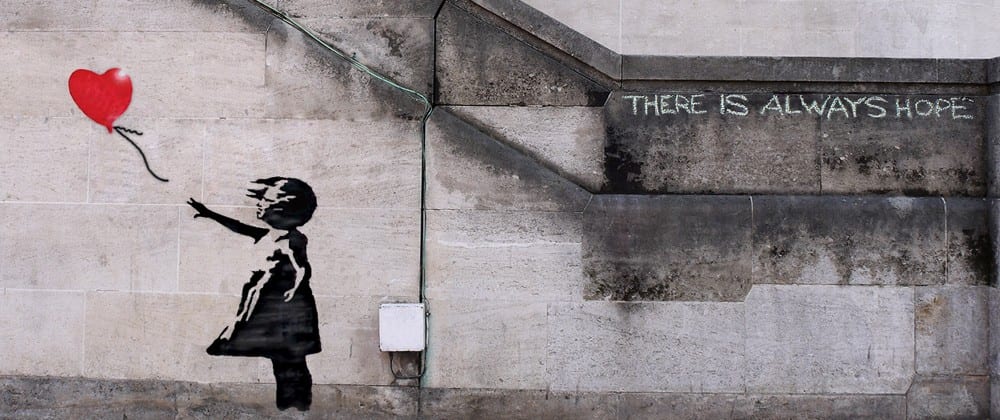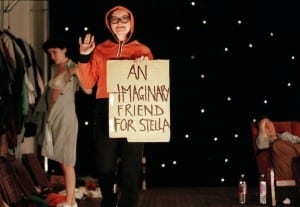The term ‘postdramatic’ was coined by Hans-Thies Lehmann in his book Postdramatic Theatre. He uses this term to describe the contemporary mode of theatre and performance which no longer relies solely on the text to provide a dramatic basis to performance, but rather include it as only a part of the entire structure. Lehmann explains “The adjective ‘postdramatic’ denotes a theatre that feels bound to operate beyond drama, at a time ‘after’ the authority of the dramatic paradigm in theatre.” (Lehmann, 2009, 27). Liz Tomlin expands on these thoughts in her essay ‘And their stories fell apart even as I was telling them‘ by explaining that students and professionals within the theatre industry sought to focus on aspects other than the text and embrace “a contemporary practice that rejected the forms and conventions of the authored written text, in favour of collaborative practice with an emphasis on the live, the physical and the visual aspects of theatre.” (Tomlin, 2009, 57).
Lehmann further describes the term with reference to the emergence of events such as ‘happenings’, Fluxus events and live and performance art, stating “The changed use of theatre signs leads to a blurred boundary between theatre and forms of practice such as Performance Art, forms which strive for an experience of the real. With reference to the notion and practice of ‘Concept Art’ (as it flourished especially around 1970), postdramatic theatre can be seen as an attempt to conceptualize art in the sense that it offers not a representation but an intentionally unmediated experience of the real (time, space, body): Concept Theatre.” (Lehmann, 2009, 134).
Postdramatic theatre challenges the three Aristotelian unities of action, time and place. It seeks to distance itself from these controlling restraints, favouring instead a more flexible approach. As Lehmann states “In postdramatic theatre, breath, rhythm and the present actuality of the body’s visceral presence take precedence over the logos.” (Lehmann, 2009, 145). Further he adds “The principle of exposition applied to body, gesture and voice also seizes the language material and attacks languages function of representation. Instead of a linguistic re-presentation of facts, there is a ‘position’ of tones, words, sentences, sounds that are hardly controlled by a ‘meaning’ but instead by the scenic composition, by a visual, not text oriented dramaturgy.” (Lehmann, 2009, 146).
Martin Crimp’s play The City employs the three unities but only for the purposes of knocking them down again. He makes it clear from the outset that he acknowledges their existence but intends to render them ‘Blank’. Although The City does include characters, text and a setting, it does not fulfil all the tenets of a traditional piece of dramatic theatre as the world of the play is confused and we are left without a satisfactory resolution. However, in Crimp’s play Attempts on her Life, we see a clear movement away from the dramatic, towards a distinctly postdramatic structure, as he chooses to eschew all reference to character, (except for Anne, whom we never meet) place and dialogue. All 17 scenarios offer an insight into ‘Anne’ and who she may or may not be, even suggesting at one point that she is a car. There is no linear narrative, no conflict and no neat resolution, leaving us only to ponder the messages conveyed within each scene.
Session notes;
Postdramatic theatre does not have a coherent plot, definable characters, a certain setting. It is interested in exploring reality and the pretence of performance.
The making of the piece and the receiving of the piece happen simultaneously, in the same time and place, and draws attention to the weird relationship between performers and audiences, and attempts to bring this into the performance.
It addresses the relationship between the form and subject matter of theatre. The stage ought to be a ‘point of departure’ for a piece.
Lehmann’s theory essentially follows on from Szondi’s theories, in which he talks about ‘Absolute Drama’ in the 17th and 18th C, in which dialogue, communication, exclusion of anything outside the dramatic world, linear time and adherence to the three unities were paramount. At the end of the 19th C there is a ‘Crisis of Drama’ with playwrights such as Ibsen, Chekhov and Strindberg. Then 20 C drama is ‘Modern Drama’. Lehmann argues that Szondi cannot see ‘theatre without drama’.
Forced Entertainment use postdramatic methods within their performances, to explore issues of identity, politics, relationships and creating a dialogue with audiences.
Bibliography.
Lehmann, Hans-Thies. (2009) Postdramatic Theatre. Abingdon: Routledge.
Tomlin, Liz. (2009) Performance Research. Abingdon: Taylor & Francis.



